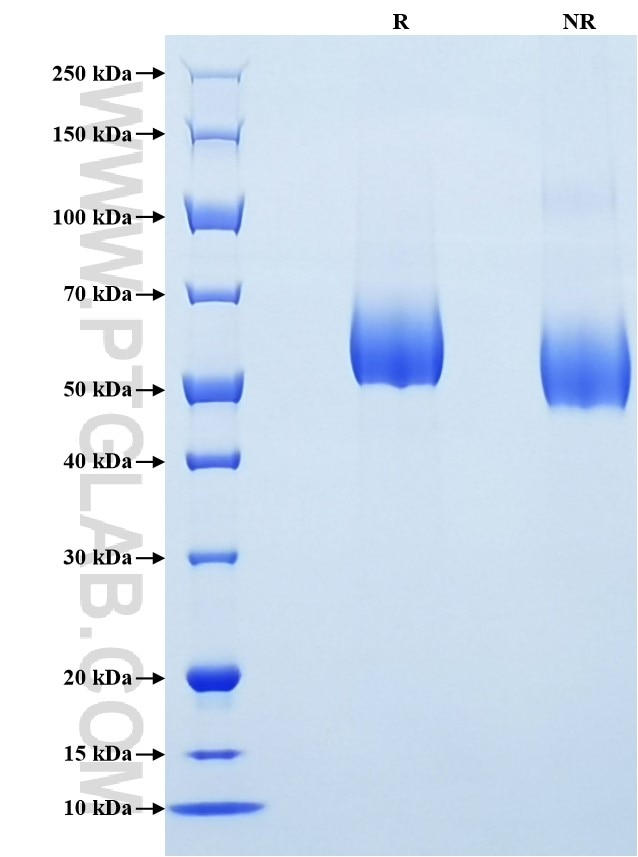Recombinant Human FGFR3(IIIc) protein (His Tag)
Species
Human
Purity
>90 %, SDS-PAGE
Tag
His Tag
Activity
not tested
Cat no : Eg1040
Validation Data Gallery
Product Information
| Purity | >90 %, SDS-PAGE |
| Endotoxin | <0.1 EU/μg protein, LAL method |
| Activity |
Not tested |
| Expression | HEK293-derived Human FGFR3(IIIc) protein Glu23-Gly375 (Accession# P22607-1) with a His tag at the C-terminus. |
| GeneID | 2261 |
| Accession | P22607-1 |
| PredictedSize | 39.2 kDa |
| SDS-PAGE | 50-70 kDa, reducing (R) conditions |
| Formulation | Lyophilized from 0.22 μm filtered solution in PBS, pH 7.4. Normally 5% trehalose and 5% mannitol are added as protectants before lyophilization. |
| Reconstitution | Briefly centrifuge the tube before opening. Reconstitute at 0.1-0.5 mg/mL in sterile water. |
| Storage Conditions |
It is recommended that the protein be aliquoted for optimal storage. Avoid repeated freeze-thaw cycles.
|
| Shipping | The product is shipped at ambient temperature. Upon receipt, store it immediately at the recommended temperature. |
Background
Fibroblast growth factors (FGFs) are polypeptide growth factors involved in a variety of activities including mitogenesis, angiogenesis, and wound healing. The human FGF receptor family, a subfamily of receptor tyrosine kinases (RTKs), comprises of four family members-FGFR1, FGFR2, FGFR3, and FGFR4. Each receptor contains an extracellular domain with either two or three immunoglobulin-like domains, a transmembrane domain, and a cytoplasmic tyrosine kinase domain. FGFR3 plays a key role in different important physiological cellular processes such as regulation of cell growth, proliferation, angiogenesis, among the others. Moreover, FGFR3 binds acidic and basic fibroblast GH and plays a role in bone development and maintenance. Mutations in the FGFR3 gene lead to craniosynostosis and multiple types of skeletal dysplasia.
References:
1. K Keegan. et al. (1991). Proc Natl Acad Sci U S A. 88(4):1095-9. 2. Kai Hung Tiong. et al. (2013). Apoptosis.18(12):1447-1468. 3. C Deng. et al. (1996). Cell.84(6):911-921. 4. Claudia Maria Ascione. et al. (2023). Cancer Treat Rev.115:102530.
